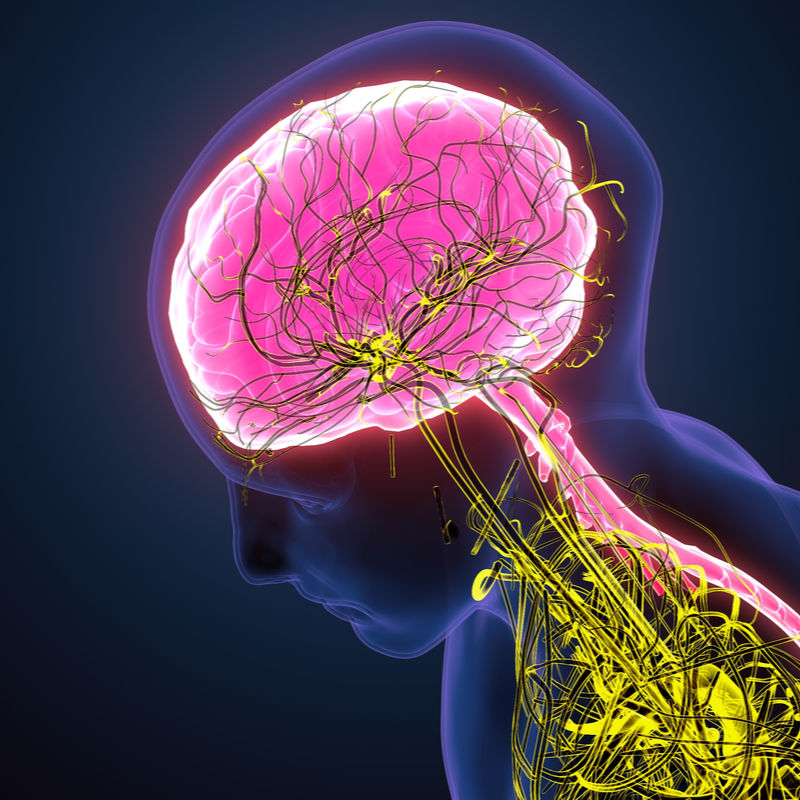
What is an oligoastrocytoma?
The term oligoastrocytoma describes a type of tumour of the central nervous system. From a medical point of view, these are diffusely infiltrating mixed gliomas, which partly resemble both oligodendrogliomas and astrocytomas . Together with the analplastic astrocytomas, oligoastrocytomas account for almost 5 percent of all tumours of the central nervous system and develop with above-average frequency in adulthood between the 35th and 50th year of life. However, an oligoastrocytoma can also develop around the age of 10. Men usually get oligoastrocytomas more often than women. Oligoastrocytomas often form mainly in the cerebral hemisphere and preferentially in the frontal lobe.
Oligoastrocytomas grow over years, sometimes even decades, and are called second- or third-degree gliomas of the . Malignant degenerations occur in three to ten percent of all cases of these tumours every year. Whether such a malignant transformation occurs depends on the tissue type, but also on the molecular characteristics and the size of the tumour. As a standard therapy, complete surgical removal of the tumour is usually aimed for and can be supplemented by chemotherapy and/or radiotherapy if necessary .
What types of oligoastrocytomas are distinguished?
Oligiastrocytomas are gliomas that are characterised by their mixed form of astrocytic and oligodendroglial tumour cells. The following two tumours are distinguished from each other :
- Oligoastrocytoma (WHO grade II): which grows rather slowly, but tends to recur and can become malignant if necessary.
- anaplastic Oligoastrocytoma (WHO grade III): which grows rather quickly and tends to malignant degeneration. After surgery, chemotherapy or radiotherapy is recommended .
What causes an oligoastrocytoma to form?
The cause of oligoastrocytomas is still unknown. However, there are reports of individual cases according to which an oligoastrocytoma has formed due to scars that occurred after a radiation of the central nervous system or a brain injury . In addition, some oligoastrocytomas have been found in patients suffering from multiple sclerosis. There are also case reports of a familial clustering of oligoastrocytomas, which is why a genetic disposition can also be considered in the cause of the disease.
Where does an oligoastrocytoma prefer to form?
An oligoastrocytoma occurs mainly in the cerebral hemisphere and here especially in the frontal lobe. Generally, an oligoastrocytoma can also develop in other parts of the brain. However, it occurs more rarely in the cerebellum or brain stem. The difficulty with the disease is that the tumour often infiltrates the cortex.
What are the symptoms of an oligoastrocytoma?
Oligoastrocytomas show the following typical symptoms of a glioma, which can be explained by the increasing pressure on the brain or the tumour growing into the surrounding tissue:
- Headache,
- prolonged nausea and/or vomiting
Headaches,
caused by an oligoastrocytoma, unlike
conventional headaches, occur very suddenly. In addition,
they can increase in intensity within days or weeks. If
painkillers can provide any relief at all, it is only for a
relatively short period of time. The headache is also
more severe when lying down and goes away spontaneously when the patient is in
an upright position.
Relatively many patients may also suffer an epileptic seizure and/or show the symptoms of a stroke, such as the onset of unilateral paralysis and/or speech disorders. The latter is especially the case if the oligoastrocytoma bleeds in. If these symptoms occur, many patients usually present to the doctor for the first time, whereupon the oligoastrocytoma is diagnosed. Depending on the stage of the tumour, the symptoms can increase in intensity.
How is an oligoastrocytoma diagnosed?
An oligoastrocytoma can be diagnosed by the usual imaging procedures of a magnetic resonance imaging (MRI) of the skull. If this is not possible , a computer tomography (CT) is performed, which has the advantage that calcifications can often also be detected. Calcifications occur in about 80 percent of all cases of disease. A tissue sample (biopsy) must be taken for a detailed diagnosis and for a definite diagnosis.
How does an oligoastrocytoma present itself from a histological point of view?
Histologically the oligoastrocytoma appears as a grey-reddish tumour, mostly interspersed with cysts . This results in a round cell nucleus with a cytoplasm that has thin vessels arranged in the form of a mesh fence. Doctors also speak of a so-called "boiled egg" phenomenon.
How is an oligoastrocytoma treated?
The first choice of treatment for an oligoastrocytoma is surgical resection of the tumour. However, due to the infiltrative growth character of the tumour, it is hardly possible to achieve a cure through surgery alone . However, surgery significantly reduces the tumour volume. Any discomfort that may occur, for example due to the intracranial pressure, can be alleviated in this way . In addition to surgery, radiation therapy or chemotherapy is recommended, especially if the tumour continues to grow after the operation. Both radiotherapy and chemotherapy are equally effective and are usually used for tumours of WHO grade II.
What is the follow-up care for oligoastrocytoma?
The first follow-up examination takes place about six weeks after the end of the therapy . An MRI is used to check the extent to which the tumour has regressed. If the tumour is an oligoastrocytoma (WHO grade II), the subsequent check-ups will take place every three and, if the findings remain constant, every six to twelve months.
What is the prognosis for oligoastrocytoma?
The 5-year survival rate for an oligoastrocytoma (WHO grade II) is between 38 and 83 percent and thus has a generally more favourable prognosis than an astrocytoma of the same WHO grade. A WHO grade I oligoastrocytoma has an even more favourable cure outlook.
